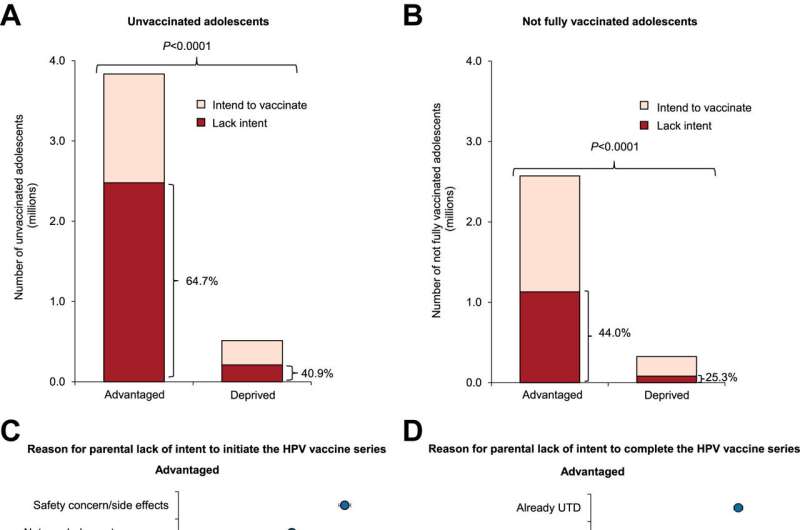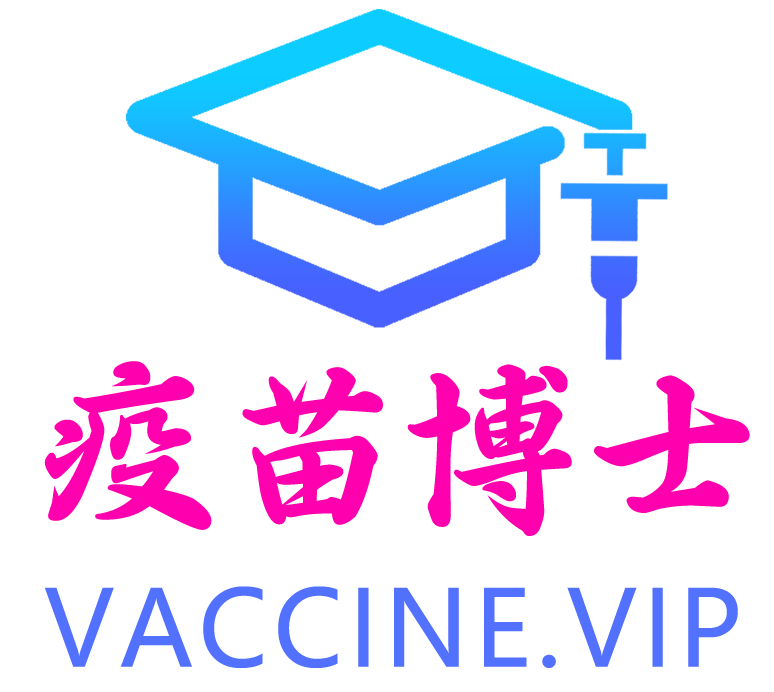2月 20, 2024
Socioeconomically advantaged individuals less likely to seek out HPV vaccination for their children, researchers find
研究人员发现,社会经济上处于有利地位的人不太可能为他们的孩子寻求HPV疫苗接种

数以百万计的青少年的父母无意让他们的孩子接种人乳头瘤病毒(HPV)疫苗。与收入或教育程度较低的父母相比,社会经济地位较高的父母不太可能计划为孩子接种疫苗。
HPV可导致男性和女性患上六种癌症,这就是为什么公共卫生倡导者希望看到更多人接种疫苗的原因。美国的“2030年健康人”设定了80%的青少年接种完整疫苗系列的目标,但青少年的这一比例一直停滞在63%左右。
MUSC Hollings癌症中心的研究人员意识到所谓的“反向差异”,即来自低收入或少数族裔社区的人比来自更有利社区的人具有更好的HPV疫苗接种覆盖率,他们希望了解疫苗犹豫的程度,并揭示可能导致疫苗接种覆盖率差异的原因。
他们使用了全国青少年免疫调查的调查结果,这是一项年度电话调查,涵盖了几种常规的青少年疫苗。他们的研究结果本周发表在《柳叶刀区域健康—美洲》上。
研究人员发现,大多数社会经济优势的父母(65%)不打算为他们的青少年寻求疫苗,而弱势群体的父母则为40%。
原因因群体而异。优势父母通常提到安全问题,而弱势父母则表示缺乏对疫苗的了解,缺乏初级保健提供者的建议,或者觉得疫苗没有必要。
“来自社会经济优势家庭的父母可能会降低他们孩子的HPV感染风险,”主要作者Kalyani Sonawane博士说,他是Hollings研究员和公共卫生科学系副教授。“HPV疫苗的副作用也可能在父母的心目中被夸大了。
资深作者Ashish Deshmukh博士是Hollings癌症控制研究项目的联合负责人,他指出,白人父母,无论他们是有利的还是不利的,都表现出“普遍”缺乏接种疫苗的意图。
鉴于超过一半的青少年是白人,他们父母的疫苗接种决定对整个年龄组的群体免疫力有重大影响。
“这在人口层面有影响,因为如果大多数青少年是白人,来自中等或高收入家庭,如果他们的父母认为疫苗不安全,那么就会影响疫苗覆盖率,”索纳瓦内说。
先前的研究表明,少数族裔父母更有可能接受疫苗,并认为HPV感染的威胁更大。他们不一定是错的——黑人和西班牙裔女性的宫颈癌发病率和死亡率都更高,宫颈癌几乎总是由HPV引起的。
与此同时,Deshmukh在过去一年中发表的研究表明,低收入县的白人女性和30岁出头的女性的宫颈癌发病率正在上升。获得预防保健和治疗的问题可能是所有这些群体死亡率较高的原因。
HPV疫苗于2006年首次获得批准。建议青少年接种,但可以作为补种疫苗接种至 26 岁。由于HPV非常普遍——美国疾病控制和预防中心指出,几乎每个人都会在某个时候暴露出来——建议在一个人可能暴露之前就接种疫苗。但是,在与医生讨论后,可以将其用于 45 岁以下的成年人。
HPV有数百种毒株,其中大部分人体会自行清除。然而,其中一些菌株可以继续发展为宫颈癌、头颈癌、肛门癌、癌、阴道癌或外阴癌。
索纳瓦内说,未来的研究可能会进一步按收入或教育程度细分优势群体。这项研究包括一个中间群体,其中父母要么受过高中以下教育,要么收入低于联邦贫困线的200%。在混合组中,研究人员发现,较高的教育水平对HPV疫苗犹豫的影响大于收入。
更多信息:Kalyani Sonawane 等人,与社会经济优势家庭与贫困家庭青少年的父母人瘤病毒疫苗接种意向相关的因素:一项全国性的横断面调查,《柳叶刀区域卫生——美洲》(2024 年)。DOI: 10.1016/j.lana.2024.100694
Hits: 25
